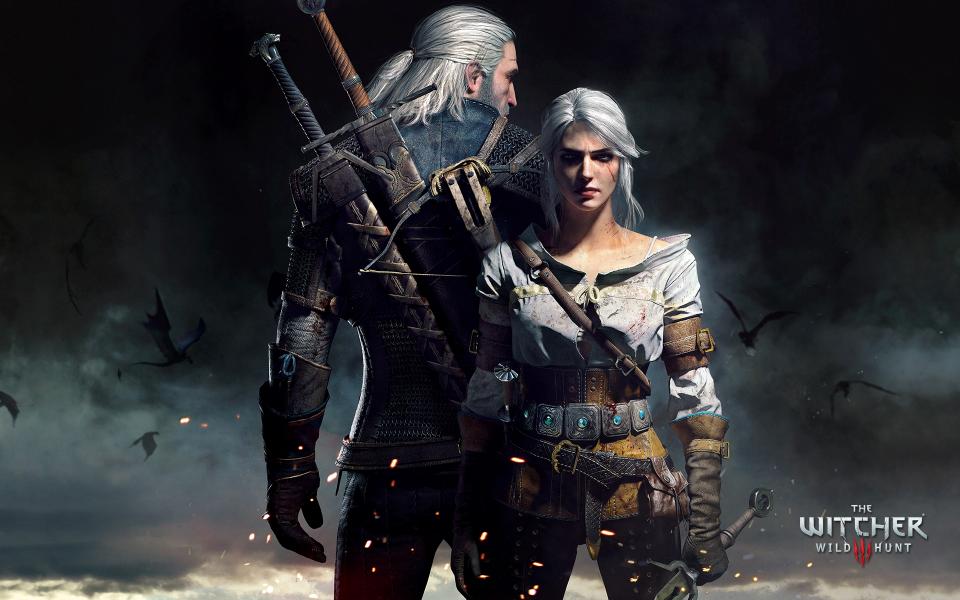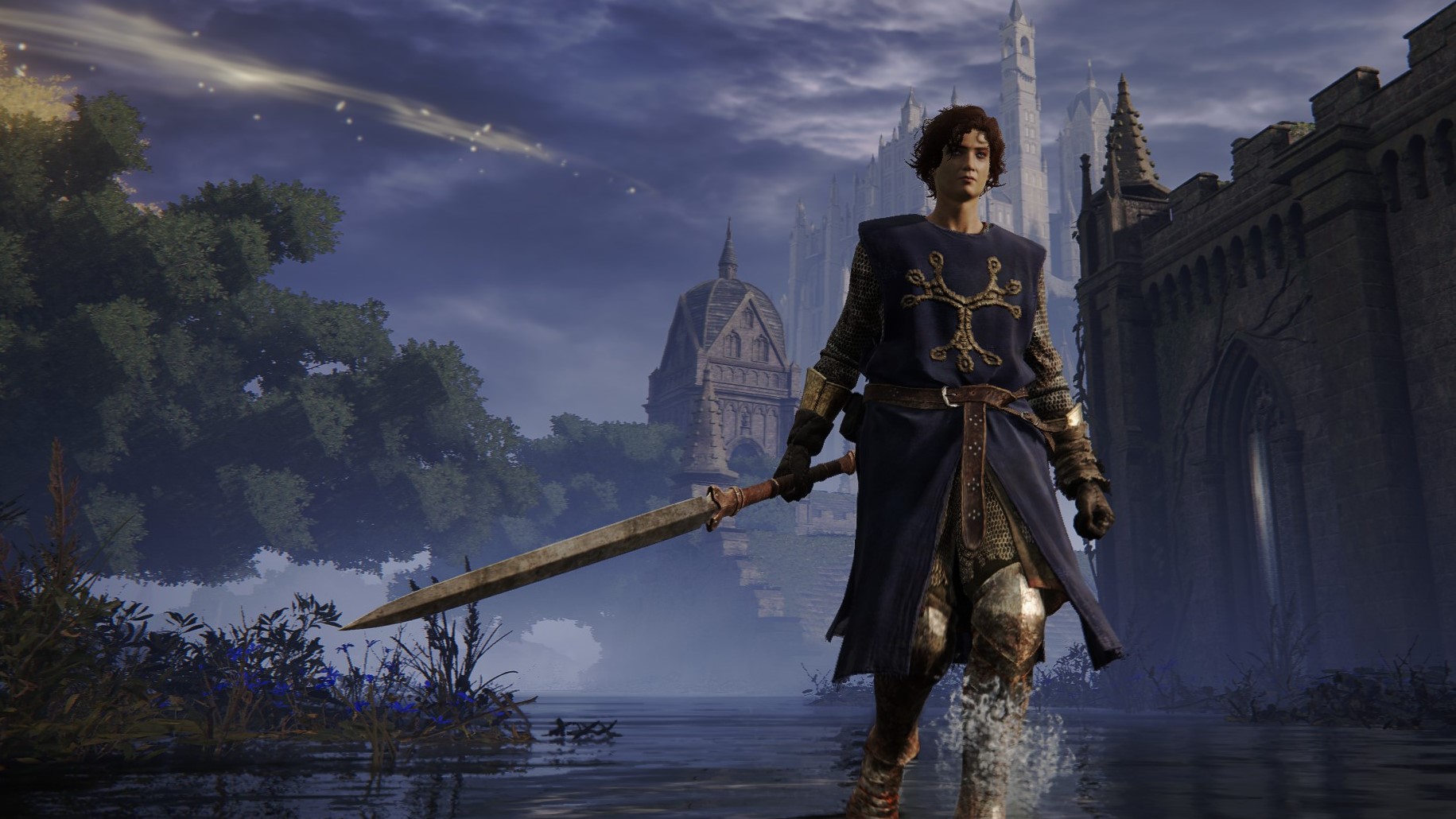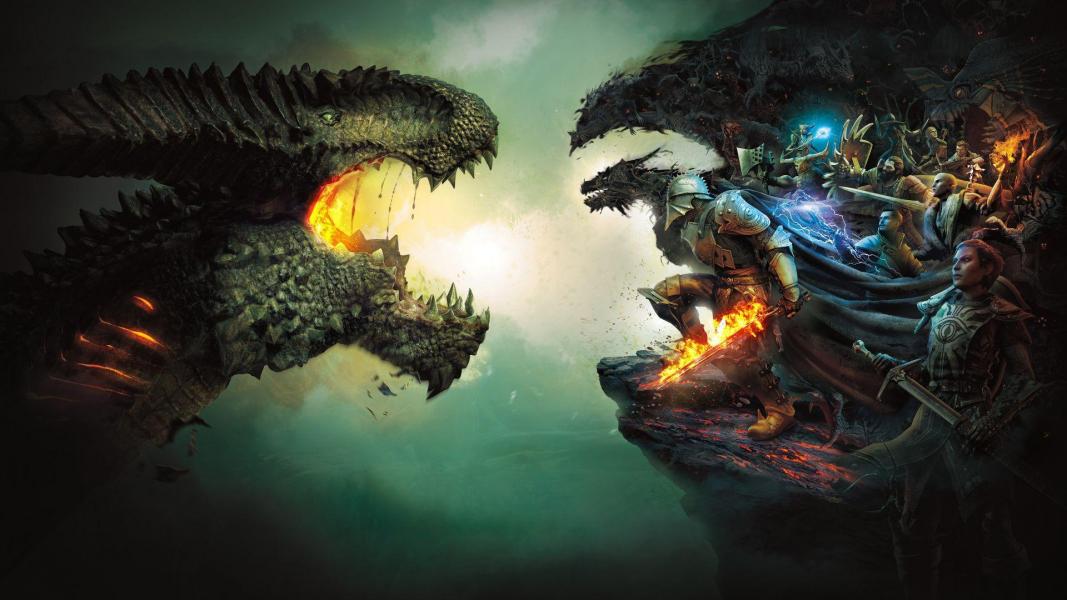
The Witcher Series, One of The Best RPG Games this generation.
What was originally a series of novels by Polish author Andrzej Sapkowski, the tale of Geralt of Rivia has quickly become of the most celebrated RPGs of all time, launching developer C.D. Projekt Red into the spotlight out of the bankruptcy they found themselves in just a few years ago. With The Witcher 3: Wild Hunt selling nearly 10 million copies by March of 2016, it has become of the most successful RPG franchises in recent history, and is now evolving its stand-alone card game into a full fledged project. Which raises the question: how did a tiny game studio in Poland, whose business model pre-Witcher was simply localizing games, become one of the most talked about developers in the industry today? For that, we have to look at the first game in the series, The Witcher.
The Witcher (2007)

The original Witcher game gave players their first look at the adaption of Geralt of Rivia from the Polish novels of the same name
The Witcher was C.D. Projekt Red’s first attempt at creating a game, and without a little help from their friends in the gaming industry, may never have happened at all.
The game focuses on one Geralt of Rivia, a trained fighter that, after rigorous training as a youth, finds himself serving in the role of a Witcher. Witchers are genetically enhanced humans who utilize powers not seen in the general populace, such as a “Witcher Sense” that may be used to track people and monsters alike. Geralt is forced to choose between allying with three separate factions: the Scoia’tael, the Elves, or the Order of the Flaming Rose, and his actions in relation to any group will send ripples throughout the game’s storyline (he can also choose to side with none of these groups, and maintain famous “Witcher Neutrality”). While the nature of the game negates the idea of a “true antagonist,” Geralt finds himself protecting King Foltest more often than not, while attempting to locate and stop the “Grand Master.”
Finding themselves hurting for money during the development of the game, BioWare actually licensed out their game engine, Aurora, for C.D. Projket Red to use, and granted them space at their booth during the 2004 Electronic Entertainment Expo. After Atari agreed to publish the game, The Witcher opened to mostly positive reviews, and despite initial sales of the game not quite offsetting the budget, C.D. Projekt immediately began work on a sequel.

Towns in the original Witcher were fairly detailed for the time

Fighting groups of enemies is a common occurance during a playthrough
The Witcher 2: Assassins of Kings (2011)

While not an in-game shot, it certainly encapsulates the action brought to the franchise by the second installment
A marked departure from its predecessor, The Witcher 2 sees C.D Prjojekt begin to really find its stride to the tune of both critical and commercial success.
Picking up from where the first game left off, Geralt is under suspicion of assassinating King Foltest of Temeria, and must work to clear his name while simultaneously finding the real killer. Similar to the first title, Geralt is often faced with choices that embody a “lesser of two evils” scenario, where either choice will come with its own set of consequences. After discovering that the assassin in question is fellow Witcher Letho of Gulet, Geralt must choose whether to let him live, or engage in a duel to the death. This journey of course, is filled with conflict every step of the way, but thanks to the new combat system, can be quite enjoyable.
The Witcher 2 experiences an almost complete overhaul to the combat mechanics of the first title, starting with simply more options in battle, including a host of new melee weapons and the introduction of throwing ranged weapons. Additionally, players can upgrade abilities following certain paths: each path will help to strengthen Geralt in a key component of the game’s combat. All this added up to a pretty successful launch for the company, and the game experienced new levels of popularity, with even President Obama receiving a copy during his visit to Poland.

The detail seen in towns has seen a sharp increase since the beginning of the franchise

An overhaul to the combat system plus new enemies made for an ehanced experience for gamers
The Witcher 3: Wild Hunt (2015)

The final game in the saga of Geralt promises the largest and most epic experience to date
The final entry into The Witcher franchise is undoubtedly its most ambitious, and well recieved, to date, and has placed C.D. Projekt at the top of the RPG franchise.
Geralt of Rivia is nearing the end of his questing days, opening the game with a final, personal quest to track down and locate Yennefer of Vengerberg. While this quest proves successful (Yennefer actually finds him), it turns out to merely be a stepping stone in the main questline of the game, which is to find and save Ciri, the emperor’s biological daughter and Geralt’s ward, from the Wild Hunt, a horde of spectral elves that seek to harness Ciri’s special powers for their own purposes. Along the way, Geralt meets friends both old and new as he tracks down the girl, and the player gets to experience Kaer Morhen, the Witcher school Geralt hails from, for the first time in the series.
After their humble beginnings using BioWare’s Aurora engine, The Witcher 3 runs on REDengine 3, which was designed specifically for nonlinear role-playing video games set in vast open world environments. It seems like it paid off, with the game achieving perfect 10’s from many gaming review websites and selling millions of copies across a plethora of platforms. Additionally, The Witcher 3 garnered over 800 individual awards, including over 250 “Game of the Year,” starting before the title was even released. The news that this would be Geralt’s last big adventure saddened many, but C.D Projekt wasn’t done quite yet, for just a few months later, they released…

It's hard not to appreciate how far the developers have come when it comes to detailing the cities in the game

With all the new weapons at your disposals, enemies are going to be tougher than ever, including this werewolf
Hearts of Stone (2015)

While the majority of the core gameplay sticks around, the story is unlike one ever told in the tale of Geralt
The first expansion to The Witcher 3: Wild Hunt finds our hero tangling with the mysterious Man of Glass, the immortal Olgierd von Everec, and some old friends.
Beginning with a contract to take out a giant toad, Geralt finds that the toad is in fact a prince he has been set up to kill, and escapes imprisonment with the help of one Gaunter O’Dimm. In return for his kindness, Geralt must secure a debt on his behalf from Olgierd, who has become immortal thanks to an exchange of his emotions, hence carrying a “heart of stone.” This debt turns out to be the fulfillment of three wishes, all of which Geralt must complete in order to repay it, but things aren’t always as they appear as Geralt unravels the mystery of the relationship between the two men. It’s up to the player to decide which party they should side with, with each choice following the classic “lesser of two evils” style employed so much by the previous games.
Featuring the same gameplay players can expect from the base game, Hearts of Stone serves as a standalone tale in the life of our Witcher, and was met with positive reviews across the board.

This giant toad isn't exactly what he appears to be, and begins the main quest of the expansion

Geralt runs into an old friend from a previous installment, Shani, as you uncover the myster of the immortal man
Blood and Wine (2016)

Vampires abound in the final chapter of Geralt of Rivia's epic saga
As the final hurrah of the world’s favorite Witcher, Blood and Wine finishes the series with a bang, but begins with perhaps the most base mechanic in the game: a witcher contract.
Given to him by the Duchess Anna Henrietta of Toussaint, Geralt must discover what beast has slain two of her knights. After more fall to his (the beast’s) hand, Geralt discovers that he is dealing with a higher vampire, and joins forces with an old friend to discover the motive behind these killings. As you may have guessed, things aren’t always as they appear, and soon our hero learns of blackmailing, curses, codes, and a host of other factors that turn a simple contract into a multi-faceted quest for a child, honor, and the fall of a kingdom. Whose side will you take in this final chapter of Geralt’s travels?
Considered by many to almost be a separate project due to its immensive scope, Blood and Wine received even better praise than Hearts of Stone, celebrating the “ride into the sunset” fans of the series had been both eagerly anticipating and dreading since learning of its development. While many wish to see the main story continued, we unfortunately see the end of our old friend, as C.D. Projekt has announced that no more content will be seen.

Meet all new characters in this final expansion to The Witcher storyline

Explore the region of Toussaint, known for its tasty wine and bountiful harvests
While Geralt may be done with questing, fans of the series should fear not. After attracting somewhat of a cult following, C.D. Projekt has moved ahead with the creation of an enhanced version of Gwent, the card game that exists in The Witcher universe. While a release date has yet to be announced, a closed beta for the title will begin in September of 2016 (which this writer will hopefully be a part of). If you haven’t given the game a spin, make sure to play a hand or two next time you pop in The Witcher 3, and I’ll see you at the card table!
Like this? Then check out:
15 Best Witcher 3 Weapons and How to Get Them
15 Best Witcher 3 Mods and Why You Need Them






















